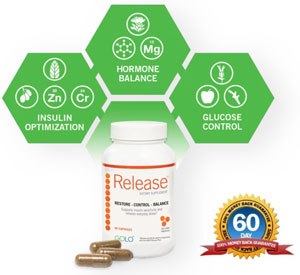Fitness
What are the best exercises for building endurance?
Published
2 years agoon
By
mbkteam
Optimal Health
In the hustle and bustle of modern life, maintaining high stamina and endurance levels can be crucial for both physical and mental well-being. Whether you're an athlete aiming to enhance performance, a busy professional seeking more energy, or a senior looking to stay active, understanding and improving your stamina and endurance can drastically improve your quality of life. This comprehensive guide will delve into essential strategies, exercises, and tips to help you optimize your stamina and endurance.
Understanding Stamina and Endurance
Stamina and endurance are often used interchangeably, but they refer to slightly different aspects of physical fitness. Stamina generally refers to when a given muscle or group of muscles can perform at or near maximum capacity. On the other hand, endurance involves the ability to sustain prolonged physical or mental effort, which is crucial for activities requiring steady, sustained performance over time.
Building stamina and endurance requires cardiovascular training, strength training, and proper nutrition. Let’s explore these components in detail.
Cardiovascular Exercises: The Foundation of Endurance
Cardiovascular activities are pivotal for boosting endurance. They strengthen the heart, improve lung capacity, and enhance the circulatory system's efficiency. Here are some excellent cardiovascular exercises to incorporate into your routine:
1. Brisk Walking or Jogging
One of the most accessible forms of exercise, brisk walking or jogging, effectively enhances cardiovascular health. Start with 20-30 minutes and gradually increase the duration. The National Institute on Aging recommends at least 150 minutes of moderate-intensity aerobic activity weekly.
2. Swimming
Swimming is a full-body workout that is easy on the joints, making it ideal for people of all ages. It improves cardiovascular endurance, enhances lung capacity, and tones muscles. Incorporate different strokes to work for various muscle groups.
3. Cycling
Whether on a stationary bike or cycling outdoors, this activity is excellent for building leg strength and cardiovascular fitness. It's also fun to explore new areas and enjoy the outdoors. Regular cycling can significantly boost your stamina over time.
4. Dancing
Not only is dancing enjoyable, but it also offers a great cardiovascular workout. Styles like Zumba, hip-hop, or ballroom dancing can keep your heart rate up while improving coordination and muscle tone.
Strength Training: Building Muscular Endurance
Muscular endurance is the ability of muscles to perform repetitive contractions over time without fatigue. Strength training is essential for enhancing muscular endurance, which supports overall stamina. Here are some vital exercises:
1. Push-Ups
Push-ups are a classic exercise for building upper body strength and endurance. They engage multiple muscle groups, including the chest, triceps, and core. If necessary, start with modified push-ups and gradually progress to standard push-ups.
2. Squats
Squats are excellent for building lower body strength and endurance. They work the quadriceps, hamstrings, glutes, and calves. Incorporate bodyweight squats into your routine and progress to weighted squats to increase intensity.
3. Planks
Planks strengthen the core muscles, which are crucial for overall stability and endurance. Hold the plank position for as long as possible, gradually increasing the duration as your strength improves.
4. Mountain Climbers
This dynamic exercise targets multiple muscle groups, including the core, shoulders, and legs. It also provides a cardiovascular challenge. Incorporate mountain climbers into your routine for a full-body workout that enhances endurance.
5. Boat Pose
The boat pose is a fantastic exercise to increase stamina at home. Sit on the floor with your legs straight, lift them into the air, and balance on your hips while stretching your arms forward. Hold this position to target the core, lower back, and hip flexors.
High-Intensity Interval Training (HIIT)
High-intensity interval Training (HIIT) involves short bursts of intense exercise followed by rest or low-intensity exercise periods. It is highly effective for increasing cardiovascular endurance and burning calories. HIIT can be adapted to almost any exercise, such as running, cycling, or bodyweight exercises. According to Healthline, HIIT can significantly improve stamina and endurance in a short amount of time.
Nutrition: Fueling Your Body for Endurance
Proper nutrition is critical for building and maintaining stamina and endurance. Here are some nutritional strategies:
1. Balanced Diet
Consume a balanced diet rich in carbohydrates, proteins, and fats. Carbohydrates provide energy, proteins support muscle repair and growth, and fats are essential for long-term energy storage. Aim to include a variety of whole foods in your diet, such as fruits, vegetables, lean meats, fish, nuts, and seeds.
2. Hydration
Staying hydrated is vital for performance and recovery. Dehydration can lead to fatigue and decreased endurance. Aim to drink at least 8-10 glasses of water daily, and increase this amount during intense workouts.
3. Supplements
In some cases, supplements can support stamina and endurance. Consider incorporating vitamins and minerals such as B, iron, and magnesium into your diet. Always consult with a healthcare professional before starting any supplement regimen.
4. Pre-Workout Nutrition
Consume a small meal or snack that combines carbohydrates and protein before workouts. This can help sustain energy levels and improve performance. Good options include a banana with peanut butter or a small smoothie.
Recovery: The Unsung Hero of Endurance Building
Recovery is just as crucial as training when it comes to building endurance. Overtraining can lead to injuries and burnout. Here are some recovery strategies:
1. Rest Days
Incorporate at least one or two weekly rest days into your training schedule. This allows your muscles to recover and grow stronger.
2. Sleep
Aim for 7-9 hours of quality sleep per night. Sleep is essential for muscle repair, hormone balance, and overall health.
3. Stretching and Flexibility
Incorporate stretching and flexibility exercises into your routine to improve your range of motion and prevent injuries. Yoga and dynamic stretching are excellent options.
4. Massage and Foam Rolling
Massage and foam rolling can help reduce muscle soreness and improve circulation. Consider incorporating these practices into your post-workout routine.
Staying Motivated: Tips to Maintain Your Exercise Routine
Consistency is key to building and maintaining stamina and endurance. Here are some tips to stay motivated:
1. Set Realistic Goals
Set achievable short-term and long-term goals to keep yourself motivated. Celebrate your progress along the way.
2. Track Your Progress
Keep a workout journal or use a fitness app to track your progress. This can help you stay accountable and see how far you’ve come.
3. Find a Workout Buddy
Exercising with a friend can make workouts more enjoyable and keep you motivated. It adds a social element to your routine.
4. Mix It Up
Avoid workout monotony by varying your exercises. Try new activities, change your workout location, or change your routine every few weeks.
5. Listen to Music or Podcasts
Listening to music or podcasts can make workouts more enjoyable and help you stay focused. Create a playlist of your favorite songs, or choose inspiring podcasts to keep you engaged.
The Psychological Aspect: Mind Over Matter
Mental endurance is just as important as physical endurance. Building mental toughness can help you push through challenging workouts and maintain consistency. Here are some strategies:
1. Mindfulness and Meditation
Practicing mindfulness and meditation can help reduce stress and improve focus. Incorporate these practices into your daily routine to enhance mental endurance.
2. Positive Self-Talk
Encourage yourself with positive self-talk during workouts. Remind yourself of your goals and accomplishments. This can help you stay motivated and push through difficult moments.
3. Visualization
Visualize yourself achieving your fitness goals. This mental rehearsal can improve performance and build confidence.
4. Breathing Techniques
Incorporate breathing techniques to manage stress and improve endurance. Focused breathing can help you stay calm and maintain energy during intense workouts.
Conclusion
Building and maintaining stamina and endurance is a multifaceted process that involves cardiovascular training, strength training, proper nutrition, recovery, and mental toughness. By incorporating the strategies outlined in this guide, you can enhance your physical performance, boost your energy levels, and improve your overall quality of life.
Remember, consistency is key. Stick with your exercise routine, stay motivated, and listen to your body. With time and dedication, you’ll achieve your stamina and endurance goals. For more detailed information and expert guidance, explore resources such as the National Institute on Aging and Healthline.
Embrace the journey to optimal health and enjoy the benefits of improved stamina and endurance in every aspect of your life.













